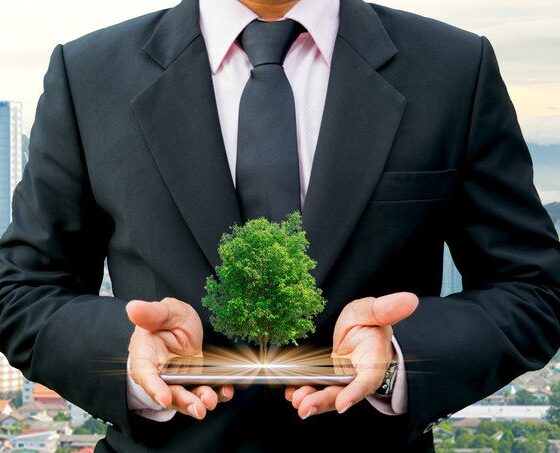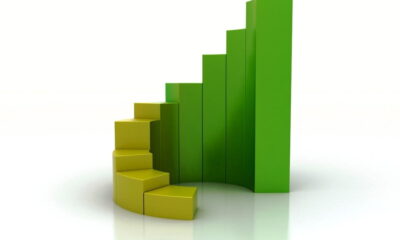

Features
How Much Should You Spend Branding Your Ecofriendly Brand
Customers value environmental causes. Polls from a research survey conducted by Tandberg suggest that 53% of consumers prefer to buy from companies with a reputation for their commitment to the environment. As anyone who manages a business knows, reputation management is one of the most important processes for staying on top of growth and retention.
People enjoy being in nature. For example, weddingswith a lush, verdant backdrop are popular and studies show that access to nature is correlated with reductions in depression and obesity. Creating a reputation that embraces environmental consciousness and protection is a great PR move.
It’s straightforward. Staying committed to a green cause is not only great for the environment, but also great for your business. The only question is how do you actually brand your business as “environmentally friendly” or “ecofriendly” in a way that doesn’t look contrived or conceited. How much do you need to spend and how should you invest your money to make a difference in the perception of your business?
Accounting for Ecofriendly Brand Perceptions
Theory
The last thing you want to do is spend money preparing to transition your brand towards an ecofriendly image only to have it backfire on you when your customers don’t buy it. Frequently, business owners try a very direct approach to ecofriendliness by designing products with environmental targets in mind. However, brand perceptions are actually negative for initiatives such as these because the regular consumer sees this as an intentional attempt to manipulate their feelings towards that brand.
An ounce of prevention is worth a pound of the cure. In this way, accounting for ecofriendly brand perceptions at the start of your campaign is a way to control for unexpected costs such as a negative association rather than a positive association of your business’ brand with the environment. It will also help to stabilize and fix your business’ credit.
This counter intuitive attitude to ecofriendly brand perceptions is actually documented in a study published in the Journal of Consumer Research, which states that: “…consumers are less likely to purchase a green product when they perceive that the company intentionally made the product better for the environment compared to when the same environmental benefit occurred as an unintended side effect.” How you actually frame your results – which are beneficial to the environment whether or not they are intentional – shifts how customers will interpret them.
Implementation
So, before your business even gets started on developing and working out the research necessary to actually produce and portray striking, documentable green results, it needs to figure out this key issue of frame. Based on facts, your company will want to frame the environmental benefit in a way that appears accidental rather than as an intentional effort. Also, consulting with a graphics design firm on how best to position and draw attention to your company’s green efforts can help your company refine its image.
For example, you don’t want to mention that your company spent millions in research just to develop a plastic water bottle design that reduced plastic usage by a significant percentage. Instead, your company can frame the effort as part of the campaign to reduce its own costs that have the added benefit of decreasing plastic consumption. This way, the customer is likely to attribute the environmental benefit to your company’s attempts to optimize its spending rather than a direct attempt towards ecofriendly branding.
Counterexample
It is also completely possible for your brand to succeed with a direct strategy, but only if it makes sense in the context of your product and if your company has been environmentally committed since the beginning. A great example of how direct environmental advertising has succeeded can be found in Patagonia, the clothing company, and their mission statement. The Harvard Business Report notes that Patagonia’s controversial campaign strategies that seem to sacrifice its profitability for environmental purposes actually have led to increases in revenue.
Research and Development Costs
Once you’ve figured out how you actually want to market and frame your ecofriendly branding attempt, it’s time to explore the costs of researching and developing products that will make a significant impact on the environment. R&D costs will be highly variable based on the size of your company, the extent of its commitment to environmental initiatives, and the type of product or services it offers.
Taking note from some of the companies with the highest R&D costs in general, a report from Fortune magazine sees industry leaders such as Volkswagen, Intel, and Roche spending anywhere from 5 to 20 percent of their revenue on R&D. Of course, the great variation in R&D costs is a result of how dependent a company’s revenue is on that R&D. For instance, you might expect a pharmaceutical company to have greater R&D costs than an automobile company.
We want to think about environmental branding in a similar way. The cost to brand something as ecofriendly should be considered in comparison to the total revenue that such a product or service produces in the first place. Further, the expected return on investment (ROI) should be calculated as well to produce to best company budgeting plans for ecofriendly branding.
Let’s walk through a concrete example. You’re in charge of dispensing marketing costs for a company to make one of their brands appear more ecofriendly. The first thing you want to do is pull up the revenue that’s generated by that product over time, estimate the costs of R&D, and estimate an expected return on investment.
Our supposed product may bring in $10 million a year. If the costs of R&D were something like $300,000 and the expected return on this branding was $1 million, it would be favorable. This is because we have a relatively low revenue to R&D cost (less than 5 percent) and our expected return on investment is higher than the cost.






























